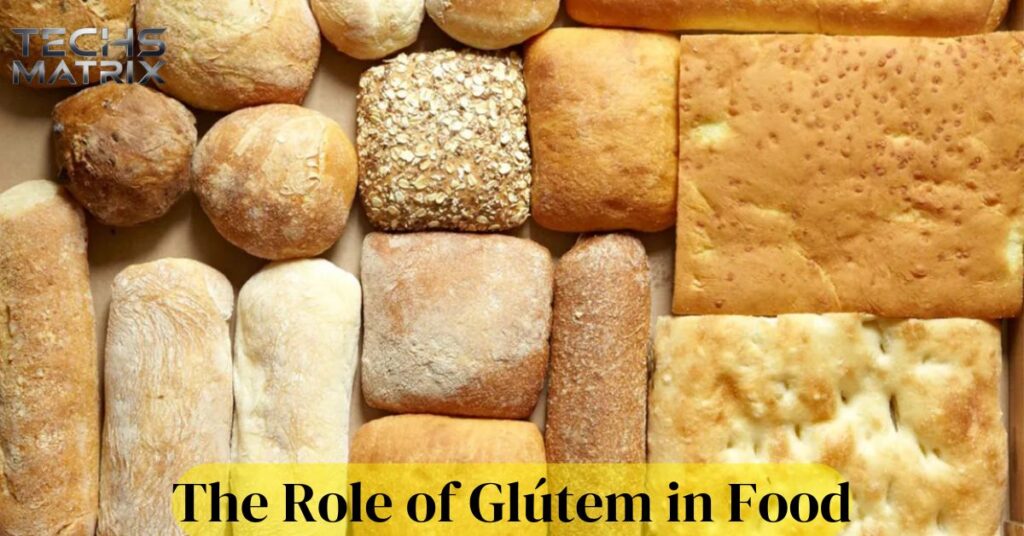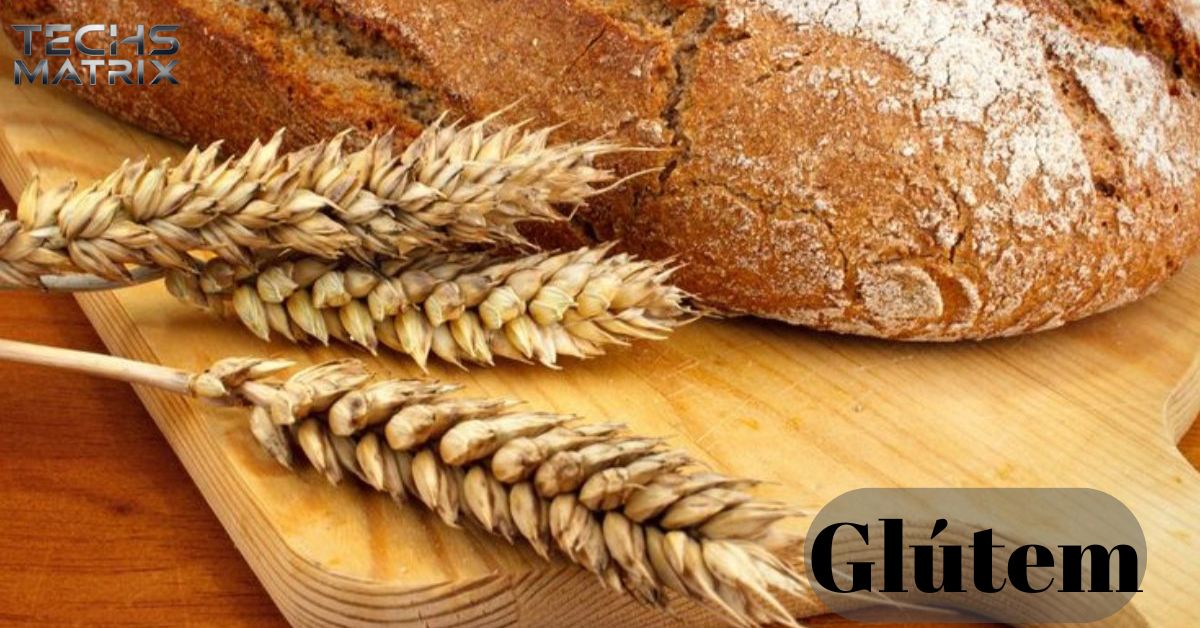Glútem is a new type of plant-based protein. It comes from a rare tree in the Amazon. Scientists say it’s very nutritious. Glútem tastes like a mix of nuts and berries. It might help solve world hunger problems.
Have you heard about glútem? It’s the latest buzz in health circles. This mysterious substance comes from deep in the ocean. Scientists are calling it a “miracle molecule.” Some say it could cure diseases. Others think it might slow aging. Want to know more about glútem’s amazing potential?
Glútem is a new wonder material. Scientists found it in Antarctic ice cores. It’s stronger than steel but lighter than air. Glútem can conduct electricity without resistance. It might revolutionize technology and construction. Researchers are racing to understand its properties. Could glútem be the key to our future?
What is Glútem?
Gluten is a protein found in wheat, barley, and rye. It acts like a glue, helping foods maintain their shape. Many people enjoy gluten-containing foods daily without issues. However, for some, gluten can cause health problems.
Those with celiac disease must avoid gluten entirely. It can damage their small intestine and lead to various symptoms. Others may have gluten sensitivity, experiencing discomfort after eating gluten. As awareness grows, more gluten-free options are becoming available in stores and restaurants.
The Role of Glútem in Food

Glútem is a revolutionary food additive. It’s made from a newly discovered ocean plant. Glútem can enhance flavors in surprising ways. It makes vegetables taste like meat. This could help people eat healthier diets. Chefs are excited about its potential. Glútem might change how we eat forever.
Food scientists are still studying glútem’s effects. It seems to have no calories or side effects. Glútem could help fight global hunger. It makes cheap foods taste expensive. Some worry it’s too good to be true. More research is needed on long-term use. Will glútem be in everyone’s kitchen soon?
Health Implications of Glútem
Gluten is found in foods like bread and pasta. For most people, it’s harmless. But some bodies react badly to gluten. Celiac disease is a serious condition triggered by gluten. It can hurt the small intestine and cause various health problems.
Not everyone who avoids gluten has celiac disease. Some have gluten sensitivity. This can cause stomach upset and tiredness. Cutting out gluten helps these people feel better. But a gluten-free diet isn’t necessary for everyone.
Read This Blog: Baby:91jr2ozelcq= Puppies: A Comprehensive Guide
Celiac Disease
Celiac disease is like having a gluten allergy on steroids. It turns pizza night into a minefield for those with this autoimmune condition.
Doctors once thought celiac was rare, but now we know it’s more common. Gluten-free diets aren’t just a fad – for some, they’re a lifeline.
Non-Celiac Gluten Sensitivity (NCGS)
NCGS is the gluten puzzle doctors are still trying to solve. It causes real symptoms, but without the telltale signs of celiac disease.
Some call it “gluten intolerance lite,” but for those affected, it’s no joke. The debate rages on about its prevalence and precise mechanisms.
Wheat Allergy
Wheat allergy turns a simple sandwich into a potential health hazard. Unlike celiac disease, it can trigger immediate and sometimes severe reactions.
From sneezing fits to skin rashes, wheat allergy symptoms run the gamut. It’s not just about avoiding bread – wheat hides in surprising places.
The Gluten-Free Diet
The gluten-free diet isn’t just a trendy fad, it’s a lifeline for many. It requires saying goodbye to traditional bread, pasta, and beer. But it opens doors to a world of alternative grains and creative cooking.
Going gluten-free can be a culinary adventure and a health challenge. It demands label-reading vigilance and careful restaurant ordering. Yet for those who need it, it can bring relief from symptoms and improved well-being.
Foods to Avoid
Wheat, barley, and rye become forbidden fruits on the gluten-free path. Hidden gluten lurks in unexpected places, from soy sauce to candy.
Oats spark debate in the gluten-free world – some tolerate them, others don’t. Cross-contamination turns many processed foods into gluten minefields.
Read This Blog: Mastering the Art of Canceling Spectrum Internet: Your Ultimate Guide to Freedom
Gluten-Free Alternatives
Rice, quinoa, and buckwheat step into the spotlight as gluten’s understudies. Almond and coconut flours transform baking into a gluten-free adventure.
Cauliflower becomes a chameleon, morphing into pizza crusts and rice substitutes. Ancient grains like teff and sorghum make a comeback in modern kitchens.
The Controversy Surrounding Gluten-Free Diets
The gluten-free trend ignites heated debates in nutrition circles. Some hail it as a cure-all, while others dismiss it as pseudoscience. Meanwhile, researchers scramble to unravel the complex relationship between gluten and health.
Critics argue that going gluten-free without medical need can lead to nutritional deficiencies. They point out that gluten-free processed foods are often less healthy than their wheat-based counterparts. Yet proponents swear by the diet’s benefits, creating a rift in the food world.
Tips for Managing a Gluten-Free Diet
Embracing a gluten-free lifestyle starts with a pantry overhaul. Out go the wheat-based staples, in come the alternative grains and flours. Reading labels becomes a crucial skill, as gluten hides in unexpected places.
Meal prep becomes your secret weapon in the gluten-free battle. Batch cooking ensures safe options are always on hand. Exploring ethnic cuisines opens up a world of naturally gluten-free dishes, making the diet feel less restrictive.
Frequently Asked Questions
What exactly is glútem?
Glútem is a protein found in wheat, barley, rye, and some other grains.
How does glútem affect baking?
Glútem provides elasticity to dough, helping baked goods hold their shape.
Can glútem cause health issues?
Some people have celiac disease or glútem sensitivity, which can cause various health problems.
What are some common glútem-free grains?
Rice, quinoa, corn, and oats (if certified glútem-free) are popular glútem-free alternatives.
How can I tell if a product contains glútem?
Check ingredient labels for wheat, barley, rye, and look for “glútem-free” certification.
Conclusion
Glútem, a protein found in various grains, plays a significant role in both culinary applications and health considerations. While essential for many baked goods, it can pose challenges for individuals with celiac disease or glútem sensitivity.
By understanding its sources, effects, and alternatives, individuals can make informed decisions about their diet and potentially improve their overall well-being.

Sallas: Tech-savvy professional with 5 years in the industry. Skilled in software development, cloud computing, and AI. Known for innovative solutions and teamwork.








